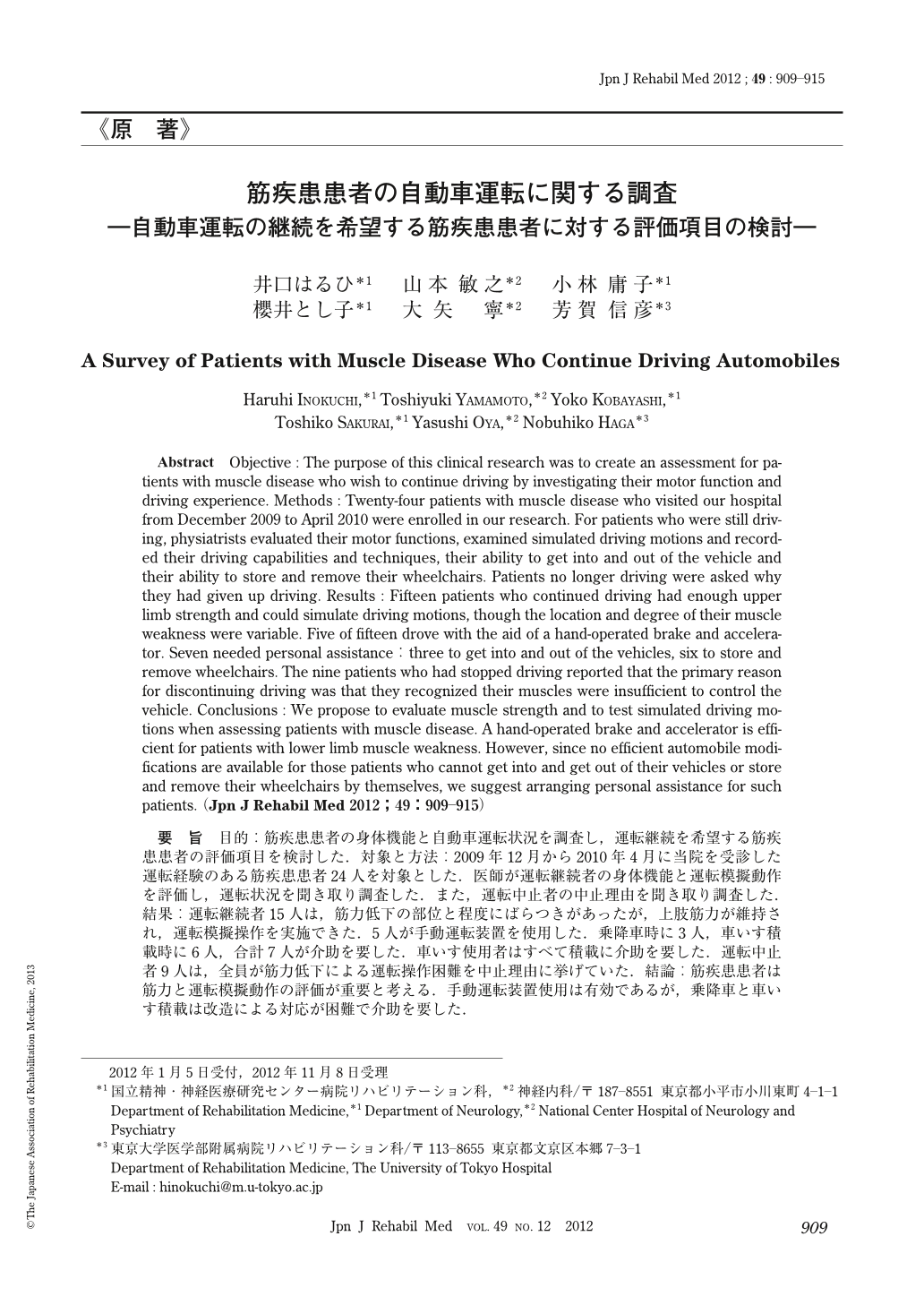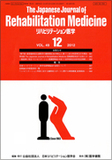Japanese
English
- 販売していません
- Abstract 文献概要
- 1ページ目 Look Inside
- 参考文献 Reference
要旨 目的:筋疾患患者の身体機能と自動車運転状況を調査し,運転継続を希望する筋疾患患者の評価項目を検討した.対象と方法:2009年12月から2010年4月に当院を受診した運転経験のある筋疾患患者24人を対象とした.医師が運転継続者の身体機能と運転模擬動作を評価し,運転状況を聞き取り調査した.また,運転中止者の中止理由を聞き取り調査した.結果:運転継続者15人は,筋力低下の部位と程度にばらつきがあったが,上肢筋力が維持され,運転模擬操作を実施できた.5人が手動運転装置を使用した.乗降車時に3人,車いす積載時に6人,合計7人が介助を要した.車いす使用者はすべて積載に介助を要した.運転中止者9人は,全員が筋力低下による運転操作困難を中止理由に挙げていた.結論:筋疾患患者は筋力と運転模擬動作の評価が重要と考える.手動運転装置使用は有効であるが,乗降車と車いす積載は改造による対応が困難で介助を要した.
Abstract Objective : The purpose of this clinical research was to create an assessment for patients with muscle disease who wish to continue driving by investigating their motor function and driving experience. Methods : Twenty-four patients with muscle disease who visited our hospital from December 2009 to April 2010 were enrolled in our research. For patients who were still driving, physiatrists evaluated their motor functions, examined simulated driving motions and recorded their driving capabilities and techniques, their ability to get into and out of the vehicle and their ability to store and remove their wheelchairs. Patients no longer driving were asked why they had given up driving. Results : Fifteen patients who continued driving had enough upper limb strength and could simulate driving motions, though the location and degree of their muscle weakness were variable. Five of fifteen drove with the aid of a hand-operated brake and accelerator. Seven needed personal assistance : three to get into and out of the vehicles, six to store and remove wheelchairs. The nine patients who had stopped driving reported that the primary reason for discontinuing driving was that they recognized their muscles were insufficient to control the vehicle. Conclusions : We propose to evaluate muscle strength and to test simulated driving motions when assessing patients with muscle disease. A hand-operated brake and accelerator is efficient for patients with lower limb muscle weakness. However, since no efficient automobile modifications are available for those patients who cannot get into and get out of their vehicles or store and remove their wheelchairs by themselves, we suggest arranging personal assistance for such patients.

Copyright © 2012, The Japanese Association of Rehabilitation Medicine. All rights reserved.


